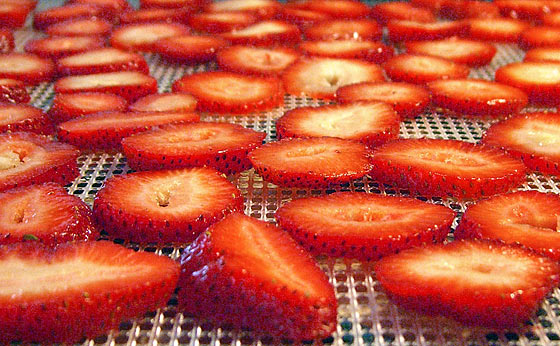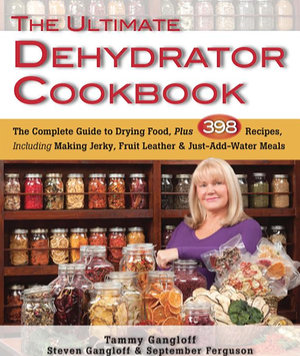How to Know When Dehydrated Fruit or Vegetables is Done? How Long?

Dehydrated food – dehydrating your own food is one relatively easy way to preserve some of your garden harvest. It’s also a great way to advantage when vegetables or fruits may be on Sale.
A common question when dehydrating fruit or vegetables is, “How do I know when dehydrated food is done?”
Dehydrated food is that which has been heated at low temperatures to remove most of the water content (moisture). This enables a longer shelf life. Since there is no high temperature ‘cooking’, dehydrated food preserves much of the food’s nutrients compared to some other methods.
The process of dehydrating food is fairly easy. Generally, you slice the food into pieces 1/4″ thick or thinner. Place them on the dehydrator trays. Set the temperature and timer (per recommendations for said food). And wait until they are done.
But how long to dehydrate fruit or vegetables?
Many fruits or vegetables may take as long as 12 hours (more or less, depending on a few things). With that said, here’s more of what you need to know…
Moisture Content
Generally, most professional dehydrating processes use the following percentages as a measure of being ‘done’…
Meats at about 20% moisture content or less.
Fruits about 10% moisture.
Vegetables 5%.
Residential dehydrators (compared to professional commercial dehydrators) cannot measure and control the moisture content.
Therefore the only method for do-it-yourself home dehydrators is to periodically test the pliability of the food by hand. With experience you will learn what is ‘right’ for the various foods, fruits and vegetables.
Pliability
How to know when dehydrated fruit is done
Fruits should be pliable (almost brittle), but not quite brittle. To test your dehydrated fruit, take a piece you have dried and cut it in half. There should be no visible moisture. If there is too much moisture remaining, you run the risk of them developing mold.
Generally speaking, fruit is considered to be sufficiently dry when, after you cut a piece of dried fruit, you cannot squeeze any water out of the piece.
How to know when dehydrated vegetables are done
Vegetables should be brittle when done.
Meats (Jerky) should be dehydrated using one of the two methods listed in the following article:
[ Read: Safe Jerky In A Home Dehydrator ]
This is THE most popular dehydrator cookbook:
The Ultimate Dehydrator Cookbook
(view on amzn)

Moisture Test using Jar or Bag
Here’s a great trick to help know when dehydrated fruit or vegetables is done. When you think they’re done, remove some from a tray and immediately put them in a mason jar or a ziploc or sandwich bag. Close it up. If moisture develops on the glass or bag within a few minutes, then it’s not done yet.
Ceramic Bowl Test
Someone here had recommended this for vegetables and most fruits.
Throw them in a ceramic bowl; you should hear a ‘ping’.
Anyone else with examples of how to know when a given food is ‘done’ when dehydrating them yourself at home?
[ Read: NESCO Food Dehydrator | 1st Choice for Entry Level ]
[ Read: Food Dehydrator Basics ]
